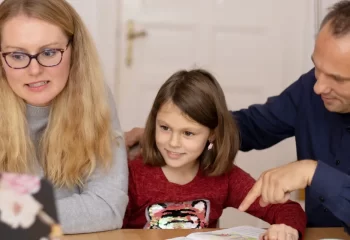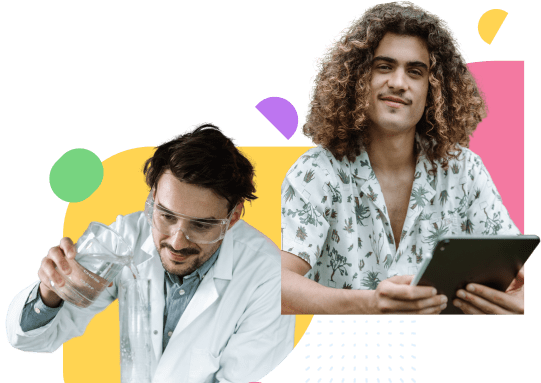It is a common misconception that pandemic learning is synonymous with online, blended learning. In fact, different types of blended learning models can be adapted to the needs of the learners.
What is Blended Learning?
In simplest terms, blended learning is what the school districts want to make it, depending on available resources and student needs. Right now, face-to-face learning is the standard. However, blended systems would combine this approach to teaching with online education.
Blended Learning Models
Within a formal educational setting, the school will control time management, location, and pace for the learner. Right now, every student has to maintain the general pace that a teacher sets. Blended learning models introduce some autonomy, which gradually increases as the student advances through the grades.
This system encourages learners to explore subjects in ways that work best for them. To achieve this goal, educators have created four intentional models to create a structured subject approach.
Rotation Model
The educator separates a subject into learning modalities. One of them is an online component. The other modalities may include group learning, written assignments, projects, and standard in-class participation. Depending on the school and educator’s preferences, this schedule may be fixed or incorporate some flexibility based on the teacher’s evaluation of the class progress. Within the rotation model, there are several subsections.
Station Rotation
During a station rotation approach, each student will interact with each station. Customization relates primarily to the time the learners spend there. However, this setup does not accommodate individual rotation models wherein teachers plan different stations for each learner.
Lab Rotation
Another approach to the rotation model involves the computer lab. It is a suitable option for the online component of the rotation.
Flipped Classroom
This combination of synchronous and asynchronous learning offers a lot of freedom to the learner. Student instruction combines attendance at a brick-and-mortar school with online learning that may take place off-site. Moreover, primary teaching utilizes the online option, with the classroom meeting being the add-on.
Individual Rotation
Teachers may base station rotation ideas on the needs of the individual learners. This system works best in smaller classroom settings with lower student-to-teacher ratios. Because each station assignment caters to the student’s progress, it may be an excellent option for learners with special needs.
Flex Model
In contrast to rotations, flex model blended learning relies on a fluid schedule that might differ for each classroom participant. The primary student-teacher engagement takes place online. The instructor is on-site, as may be the students who attend. As the teacher monitors progress, they can follow up with face-to-face support. The school might define face-to-face interaction as teacher-led tutoring, peer group support, and occasional in-person class gatherings.
A La Carte Model
Another one of the blended learning examples is the A La Carte model. A student attends a regular school for some subjects but receives course content for others online. In contrast to the Flex model, the A La Carte design makes the online teacher the instructor of record for that subject. Additionally, the learner has the freedom to engage online while off-campus.
Enriched Virtual Model
For the school administrator who wants to provide blended learning programs that rely primarily on the on-site teacher for support but take place mostly online, the Enriched Virtual model is a good choice. In-person meetings are rare; however, they are required when scheduled. Students typically receive their education off-campus, except for the occasional mandated meeting.
Blended Learning Activity Examples
The various types of blended learning give schools, educators, and students the freedom to adapt the learning approach to the individual.
-
Teachers and students decide on a specific path for the learner.
-
The student has the freedom to complete many assignments at an individualized pace.
-
Blended learning gives students as much or as little control as they can handle.
Outside blended learning, the students have the opportunity to explore individual interests. These typically integrate with the subject or topic the instructor covers. Therefore, activity examples may include self-guided online tours of museums and art exhibits. These result in the design and production of slide shows and speeches the individual learners give on the subject.
Another excellent learning project is the virtual debate. It deepens students’ soft skills since they cannot rely on body language clues. Instead, they must pay attention to the choice of words and tone a debate participant uses. Foreign language learners may appreciate the chance to participate in a classroom conducted in the target language. It offers an immersive experience that a standard class setting may not provide.




